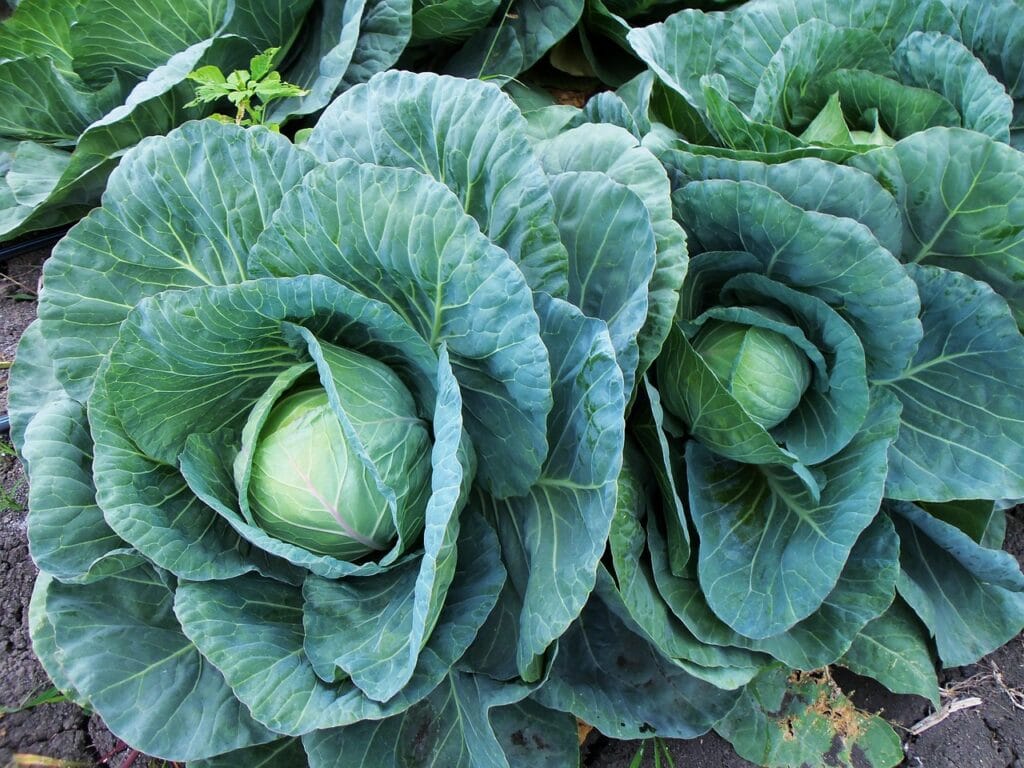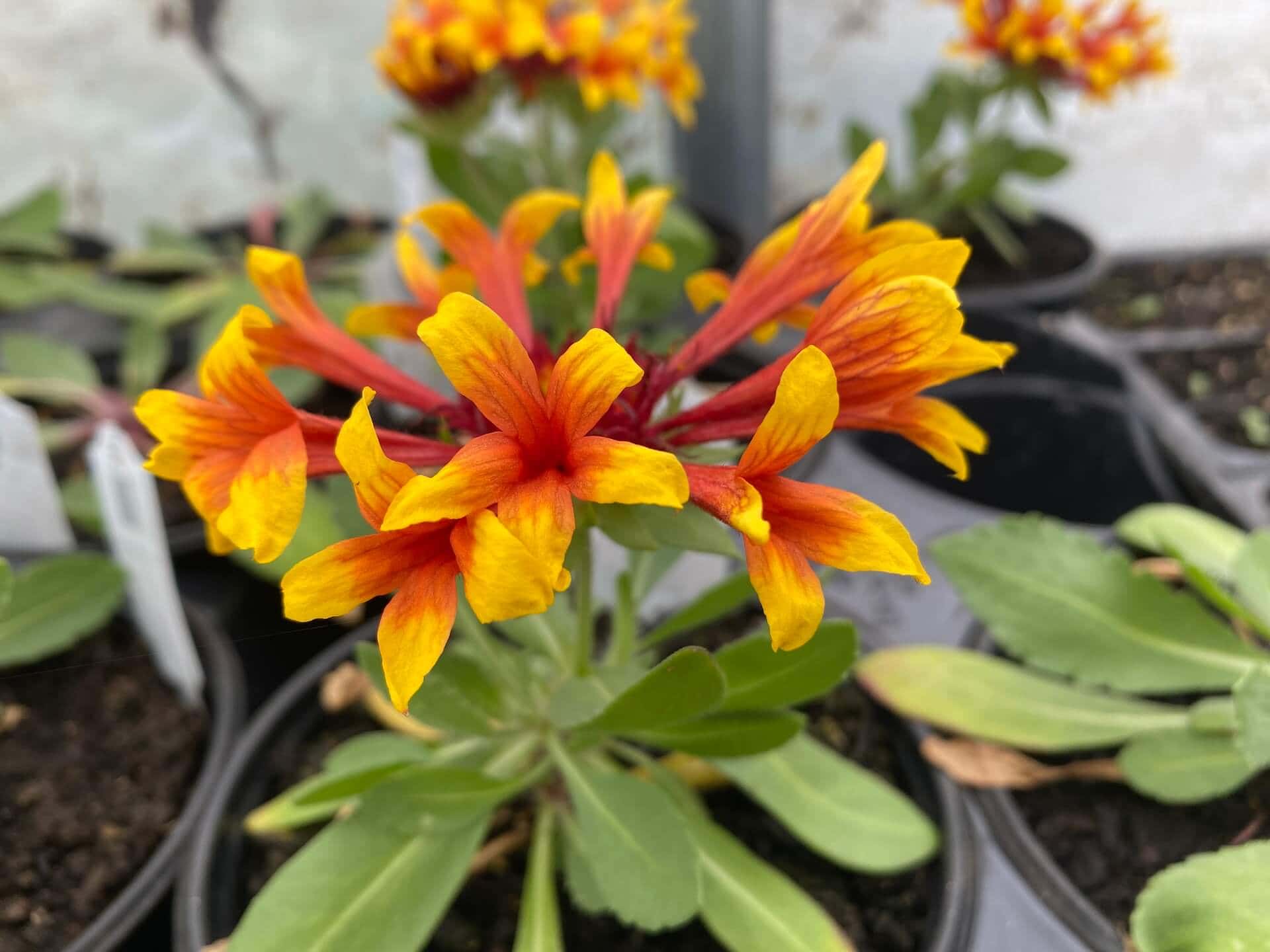This post may contain affiliate links. Probably doesn’t, but it might. It doesn’t cost you anything extra but if you use these links to buy something, we may earn a commission.
Are you looking to take your gardening game to the next level? Look no further than growing cabbage! Not only is cabbage a versatile and nutritious vegetable, but it also holds immense potential for greening up your garden. Whether you’re a seasoned gardener or just starting out, there are countless reasons why you should consider adding cabbage to your repertoire. From its incredible health benefits to its low-maintenance nature, cabbage is a must-have for any garden enthusiast. In this article, we’ll explore five compelling reasons why you should start growing cabbage today. Get ready to witness the magic of this leafy green as it transforms your garden into a thriving and sustainable oasis. So grab your gardening gloves and get ready to reap the rewards of growing cabbage!
Table of Contents
Health Benefits of Cabbage
Cabbage is not only a delicious addition to your meals but also a nutritional powerhouse. Packed with vitamins C, K, and B6, as well as fiber, cabbage offers a range of health benefits. Vitamin C is known for its immune-boosting properties, while vitamin K promotes bone health and helps with blood clotting. Additionally, the high fiber content in cabbage aids digestion and keeps you feeling full for longer. Studies have also shown that cabbage contains compounds that may help reduce the risk of certain types of cancer. So by growing cabbage in your garden, you’ll have easy access to these incredible health benefits.
But that’s not all! Cabbage is also low in calories, making it an excellent choice for those looking to maintain a healthy weight. It’s also a great source of antioxidants, which can help fight inflammation in the body. So, whether you’re looking to boost your immune system, improve digestion, or maintain a healthy weight, incorporating cabbage into your diet is a smart choice.

Environmental Benefits of Growing Cabbage
Growing cabbage can have a positive impact on the environment. Cabbage is a cool-season crop, meaning it can tolerate lower temperatures and can be grown in various climates. By planting cabbage in your garden, you’ll be reducing your carbon footprint by avoiding the need to transport it from faraway places. This not only saves energy but also reduces greenhouse gas emissions.
Cabbage is also a low-maintenance plant that requires minimal watering and pesticide use. Its sturdy leaves help protect it from pests, reducing the need for chemical interventions. Additionally, cabbage plants have deep roots that help improve soil structure and prevent erosion. By growing cabbage, you’ll be contributing to the overall health of your garden ecosystem and promoting sustainable gardening practices.

How to Grow Cabbage in Your Garden
Now that you’re convinced of the many benefits of growing cabbage, let’s dive into how you can start growing it in your garden. Cabbage can be grown both from seeds and seedlings, depending on your preference and the time you have available. If you’re starting from seeds, it’s best to start them indoors about 6-8 weeks before the last frost date in your area. Once the seedlings have grown to about 4-6 inches tall, they can be transplanted into your garden.
When choosing a location for your cabbage patch, make sure it receives at least 6 hours of sunlight per day, as cabbage thrives in full sun. The soil should be well-draining and rich in organic matter. Before planting, amend the soil with compost or well-rotted manure to improve its fertility. Cabbage plants should be spaced at least 12-18 inches apart to allow for proper growth and airflow.
Cabbage requires consistent moisture to grow successfully. Water the plants deeply once or twice a week, depending on the weather conditions. It’s important to keep the soil evenly moist but not waterlogged, as excessive moisture can lead to root rot. A layer of mulch around the plants can help retain moisture and suppress weed growth. Remember to remove any weeds that compete with your cabbage plants for nutrients and space.
Tips for Successfully Growing Cabbage
To ensure a bountiful harvest, here are a few tips for successfully growing cabbage:
1. **Fertilize regularly:** Cabbage is a heavy feeder and requires regular fertilization. Use a balanced fertilizer or compost tea every 2-3 weeks to provide the plants with the necessary nutrients.
2. **Protect from pests:** While cabbage is relatively pest-resistant, it can still fall victim to common garden pests such as cabbage worms and aphids. Monitor your plants regularly and take appropriate measures, such as using organic pest control methods or introducing beneficial insects.
3. **Practice crop rotation:** To prevent the buildup of pests and diseases, avoid planting cabbage in the same spot year after year. Rotate your crops and plant cabbage in a different part of your garden each season.
4. **Harvest at the right time:** Cabbage is ready to harvest when the heads feel firm and have reached the desired size. Cut the heads off at the base, leaving a few outer leaves intact to protect the inner leaves.
5. **Store properly:** Cabbage can be stored in a cool, dark place for several weeks. Remove any damaged or loose leaves before storing to prevent rotting.
By following these tips, you’ll be well on your way to growing cabbage successfully and enjoying a bountiful harvest.

Different Varieties of Cabbage to Consider
Cabbage comes in various shapes, sizes, and colors, offering a wide range of options to suit your preferences. Here are a few popular cabbage varieties to consider:
1. **Green cabbage:** This is the most common variety, with a round shape and vibrant green leaves. It has a mild flavor and works well in a variety of dishes, from coleslaw to stir-fries.
2. **Red cabbage:** Known for its deep purple color, red cabbage adds a pop of color to any dish. It has a slightly sweeter flavor compared to green cabbage and is often used in salads and pickling.
3. **Savoy cabbage:** Savoy cabbage has crinkled, dark green leaves and a milder taste. Its leaves are tender and perfect for stuffing or using in soups and stews.
4. **Napa cabbage:** Also known as Chinese cabbage, Napa cabbage has long, cylindrical heads with crisp, sweet leaves. It’s commonly used in Asian cuisine and works well in stir-fries and kimchi.
5. **Copenhagen cabbage:** This variety produces small, compact heads that are perfect for single servings or small households. It has a mild flavor and can be used in a variety of dishes.
Experimenting with different cabbage varieties can add excitement and diversity to your garden and culinary adventures.

Creative Ways to Use and Enjoy Cabbage
Cabbage is an incredibly versatile vegetable that can be enjoyed in a variety of ways. Here are a few creative ways to use and enjoy cabbage:
1. **Coleslaw:** A classic favorite, coleslaw is a refreshing side dish made with shredded cabbage, carrots, and a tangy dressing. Experiment with different dressings and add-ins to create your own unique coleslaw recipe.
2. **Stir-fries:** Cabbage adds a satisfying crunch and flavor to stir-fries. Pair it with your favorite vegetables, protein, and sauces for a quick and healthy meal.
3. **Soups and stews:** Cabbage works well in hearty soups and stews, adding texture and flavor. Try adding shredded cabbage to vegetable soups or using cabbage leaves as a wrapper for stuffed cabbage rolls.
4. **Fermentation:** Cabbage is the star ingredient in sauerkraut and kimchi, both of which are fermented foods packed with probiotics. Making your own fermented cabbage creations can be a fun and rewarding culinary adventure.
5. **Wraps and rolls:** Use cabbage leaves as a healthy alternative to tortillas or bread. Fill them with your favorite fillings, such as grilled vegetables, hummus, or lean meats, for a nutritious and delicious meal.
These are just a few ideas to get you started, but the possibilities are endless when it comes to using cabbage in your culinary creations. Let your imagination run wild and discover new ways to enjoy this versatile vegetable.
https://thewoksoflife.com/chinese-cabbage-stir-fry/
https://carlsbadcravings.com/cabbage-soup/
https://www.spendwithpennies.com/cabbage-stir-fry/
https://www.growforagecookferment.com/how-to-make-sauerkraut/

Common Pests and Diseases to Watch Out for When Growing Cabbage
While cabbage is a resilient plant, it can still fall prey to pests and diseases. Here are a few common ones to watch out for:
1. **Cabbage worms:** These green caterpillars can quickly decimate your cabbage plants. Look for chewed leaves and frass (caterpillar droppings) as signs of their presence. Hand-picking or using organic pesticides can help control their population.
2. **Aphids:** These small, soft-bodied insects can suck the sap out of cabbage plants, causing stunted growth and deformed leaves. Regularly inspect your plants and use insecticidal soap or introduce beneficial insects like ladybugs to keep aphids in check.
3. **Clubroot:** This soil-borne disease can cause stunted growth, yellowing leaves, and swollen roots. To prevent clubroot, avoid planting cabbage in the same spot year after year and ensure proper soil drainage.
4. **Black rot:** This bacterial disease causes blackening of the veins and yellowing of the leaves. Infected plants should be removed and destroyed to prevent the spread of the disease.
5. **Fungal diseases:** Cabbage is susceptible to fungal diseases such as powdery mildew and downy mildew. To prevent these diseases, ensure proper air circulation, avoid overhead watering, and apply appropriate fungicides when necessary.
By regularly monitoring your cabbage plants and taking prompt action when pests or diseases are detected, you can protect your crops and ensure a successful harvest.
Harvesting and Storing Cabbage
Congratulations, your cabbage plants have grown and are ready to be harvested! Here’s how to harvest and store cabbage:
– Cabbage is ready to harvest when the heads feel firm and have reached the desired size. The outer leaves should be tightly wrapped around the head.
– Using a sharp knife, cut the heads off at the base, leaving a few outer leaves intact to protect the inner leaves.
– Remove any loose or damaged leaves and inspect the heads for signs of pests or diseases.
– Cabbage can be stored in a cool, dark place for several weeks. Remove any damaged or loose leaves before storing to prevent rotting.
– If you have a large harvest, consider preserving cabbage by pickling, fermenting, or freezing it to enjoy its goodness all year round.
Remember, freshly harvested cabbage is at its peak flavor and nutrition, so try to enjoy it as soon as possible after harvesting.

Conclusion: Why You Should Start Growing Cabbage Today
As we’ve explored in this article, growing cabbage offers a multitude of benefits for both your health and the environment. From its incredible nutritional value to its low-maintenance nature, cabbage is a valuable addition to any garden. Not only does it provide you with fresh and nutritious produce, but it also helps reduce your carbon footprint and promotes sustainable gardening practices.
So, don’t wait any longer! Start growing cabbage in your garden today and witness the transformation it brings. Enjoy the health benefits, get creative in the kitchen, and take pride in your sustainable gardening efforts. With its versatility and abundance of varieties, cabbage is sure to bring joy and satisfaction to your gardening journey. Get your hands dirty, embrace the magic of growing cabbage, and watch your garden flourish like never before. Happy gardening!






